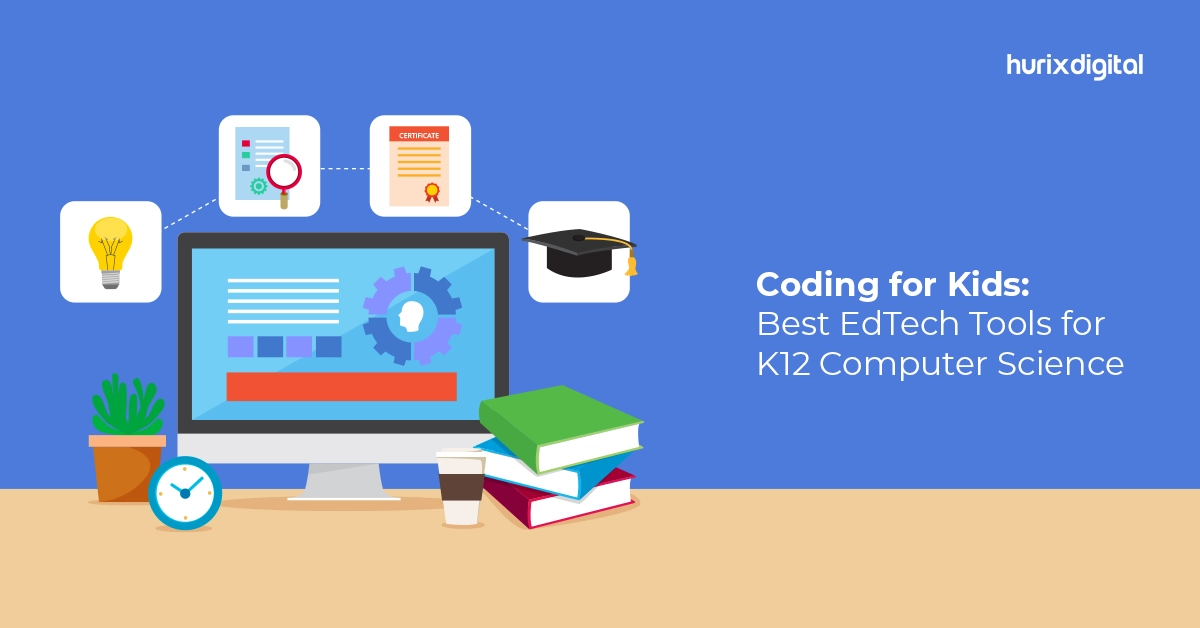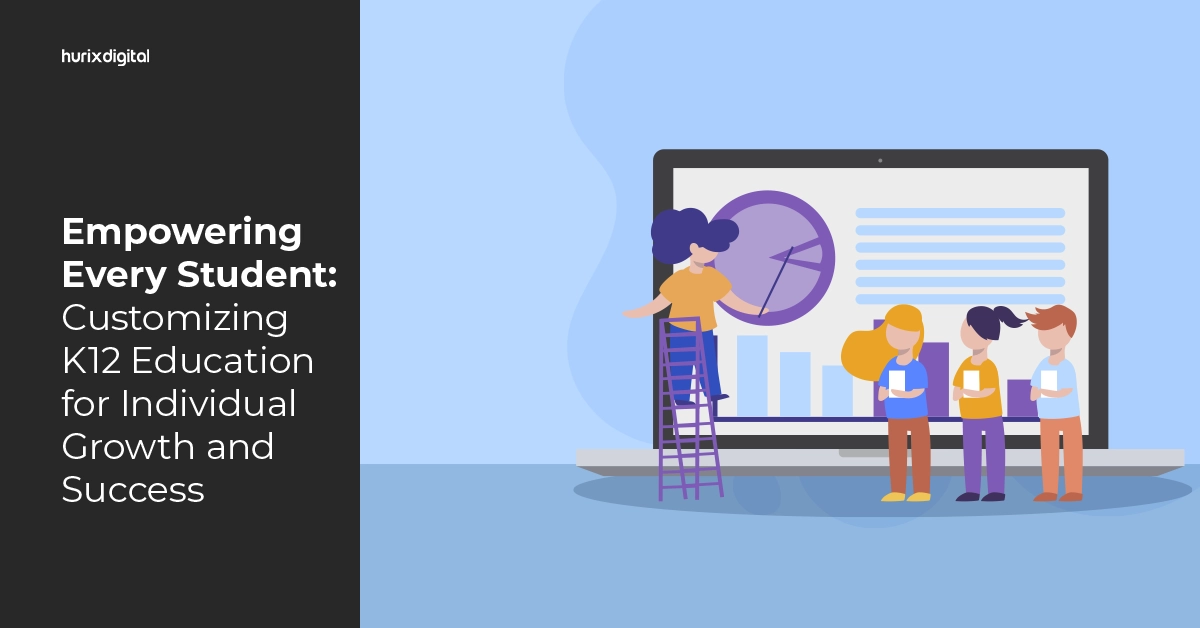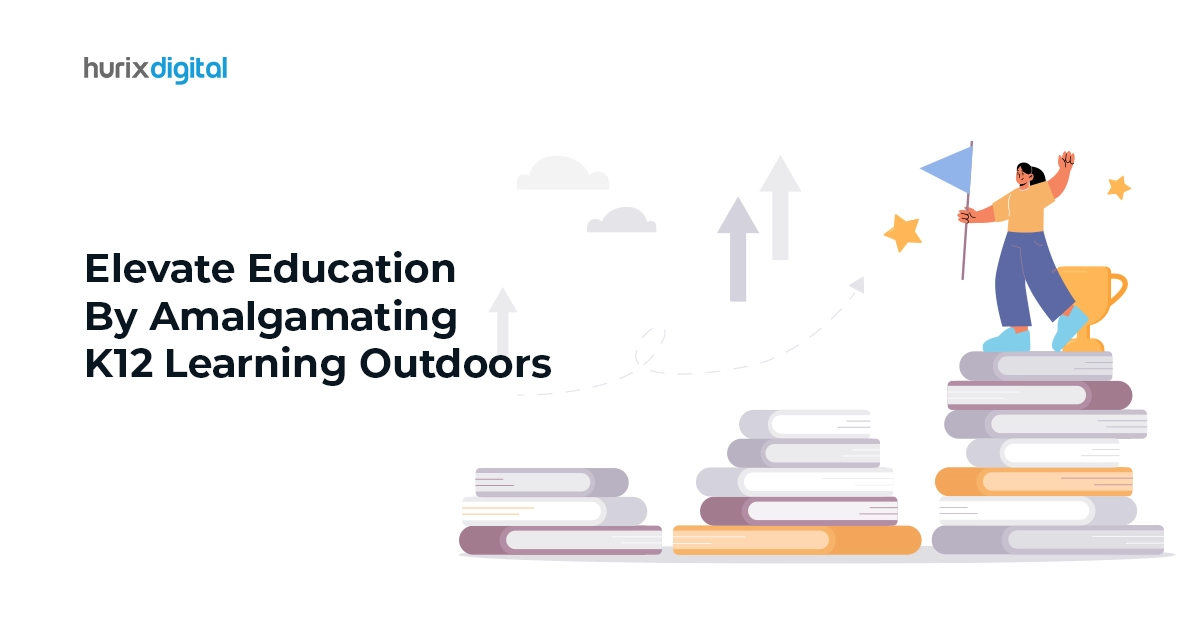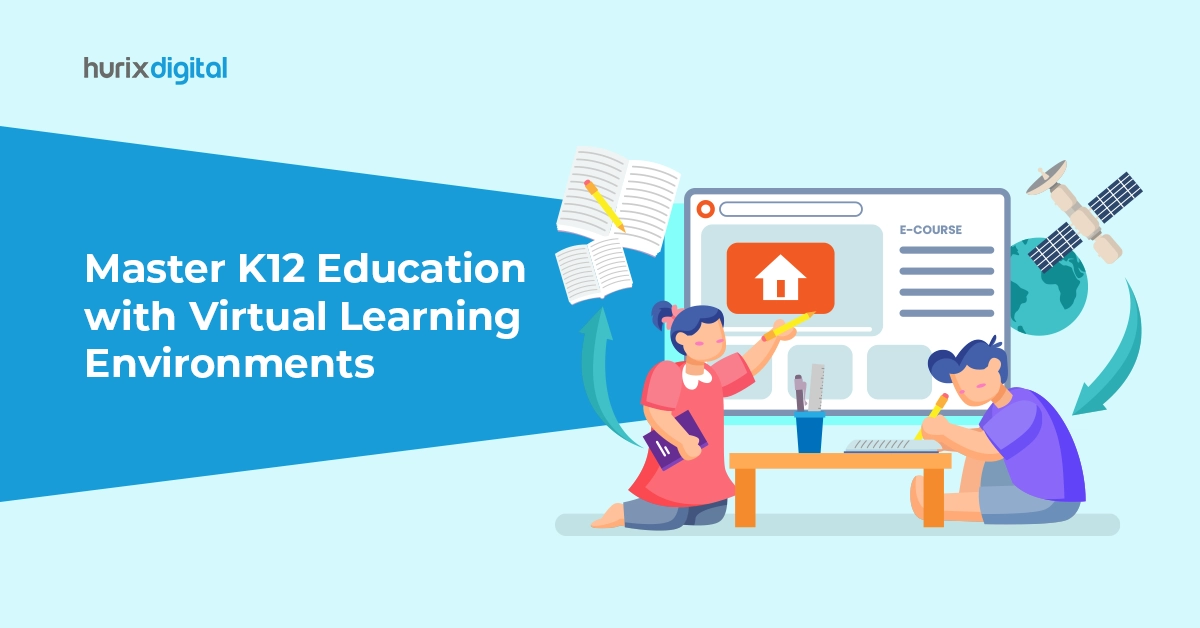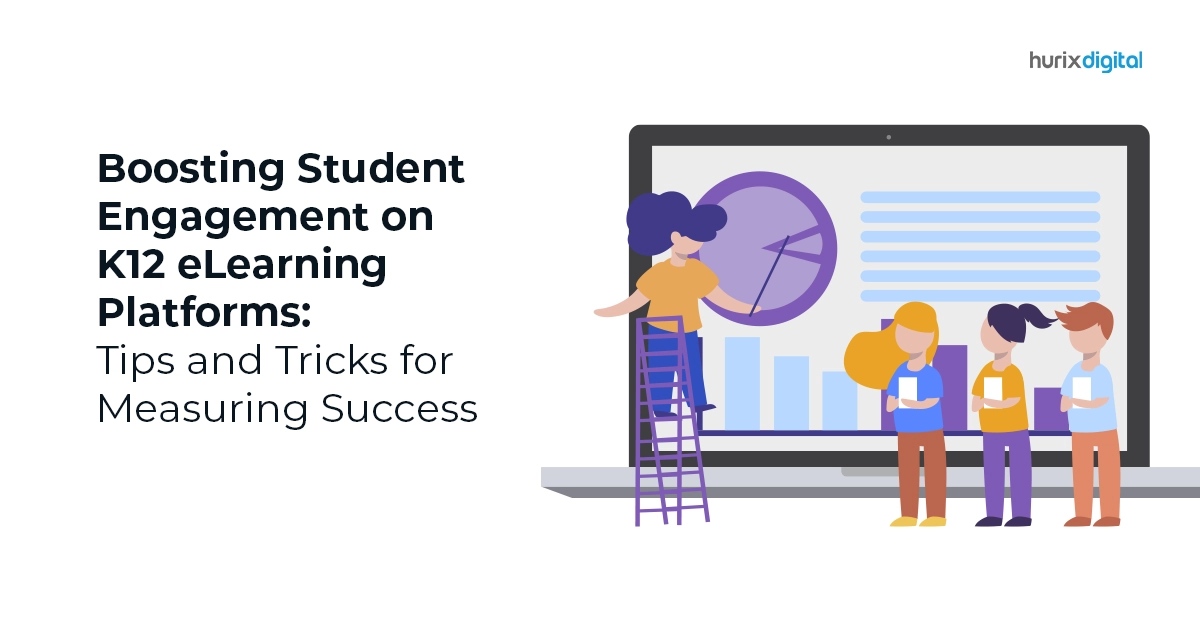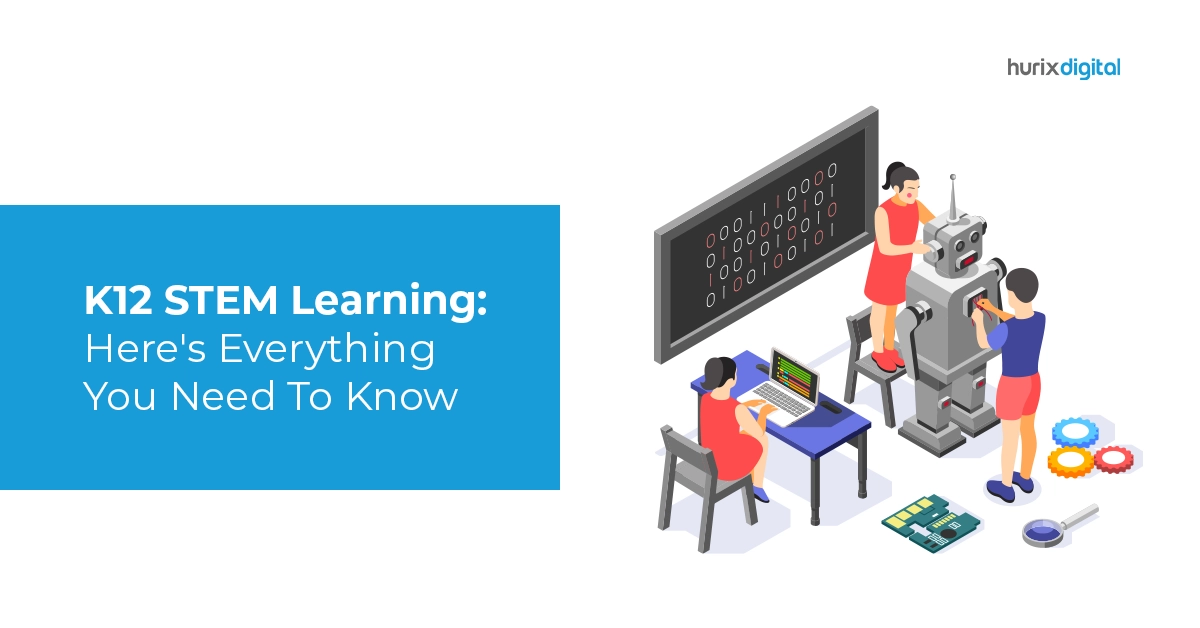Summary
This 'Coding for Kids' guide is designed to help you introduce coding to K12 students in a fun, engaging, and effective way.
Are you ready to unlock the world of coding for the next generation? In today’s digital age, computer literacy is as critical as learning to read and write.
Introducing kids to coding ignites creativity and lays the foundation for futuristic skills. But how do you teach early coding education in a fun, easy, and effective way? The answer is harnessing the power of EdTech tools.
Join us as we delve into the exciting world of K12 computer science. Explore the best educational coding platforms to make learning fun and engaging.
Table of Contents:
- Why Does Early Coding Education Matter?
- How Can You Make K12 Computer Science Fun?
- Hurix Digital: Empowering the Next Generation of Coders
- Summing Up
Why Does Early Coding Education Matter?
By introducing coding activities for K12 students, you can empower our future leaders to thrive in a tech-driven world. But coding is not only about programming.
It’s about developing critical skills like computational thinking, algorithmic logic, and teamwork. The goal is to prepare them for the digital age and inspire them to pursue careers in STEM. Here are some advantages:
1. Develops Problem-Solving Skills
K12 computer science education teaches kids to think in a structured, systematic manner. It includes breaking down challenging issues into smaller, more manageable parts.
Moreover, through coding, kids learn to create algorithms. It strengthens their ability to analyze problems and develop step-by-step solutions.
2. Promotes Creativity and Innovation
Children can express creativity by creating animations or digital stories using educational coding platforms. This process stimulates a sense of triumph and self-expression from a young age.
But that’s not all! As they explore coding, children are encouraged to think outside the box and innovate through technology.
3. Enhances Computational Thinking
With early coding education, kids learn to abstract problems and generalize solutions. It engages kids in activities that involve mathematical concepts such as patterns, sequences, and geometry.
With this, kids can strengthen their understanding of scientific inquiry practically and engagingly.
4. Prepares for Future Careers
As our world becomes more reliant on technology, coding skills are becoming essential across all verticals. Early coding education equips kids with highly desirable skills and prepares them for future career opportunities.
5. Fosters Perseverance and Resilience
When debugging a program, children often encounter errors. As they endure these problems, kids learn the value of perseverance and learning from setbacks.
This mindset teaches them that mistakes are a natural part of the learning process and necessary for improvement. It encourages children to accept problems and view them as chances for progress.
6. Boosts Communication
Many coding activities for K12 involve teamwork and collaboration, teaching kids to work together to solve problems. These social skills are invaluable in both academic and real-world settings.
7. Empowers Digital Literacy
Early coding education goes hand in hand with developing digital literacy. It helps children better understand how technology works and its responsible usage.
It can also familiarize children with online safety concepts. It includes the significance of strong passwords and the implications of sharing personal data.
Also Read: Innovative Teaching Strategies for K12 Students in the Digital Age
How Can You Make K12 Computer Science Fun?
By leveraging the power of playful learning, you can make coding accessible, fun, and inspiring for young learners. Consider these tactics to infuse creativity and excitement into the K12 curriculum:
1. Introduce Kid-Friendly Coding Apps
Making coding accessible and fun for young learners is vital in K12 computer science. Consider these popular options:
- Scratch: Developed by MIT, it is one of the best elementary coding platforms. It lets students create interactive stories and animations with an intuitive drag-and-drop interface.
- Tynker: A comprehensive platform providing courses and coding projects for students of different ages.
2. Leverage Coding Games for K12 Students
Interactive games provide a fun learning experience that motivates students to discover and apply coding concepts. Here are some popular coding games for K12 kids:
- CodeCombat: An RPG-style turnkey solution that teaches coding through immersive gameplay. It covers various programming concepts, including loops, conditionals, and functions.
- Lightbot: A puzzle game that teaches kids the basics of coding logic. It focuses focusing on sequencing and conditionals while solving puzzles.
3. Create a Robust Elementary Coding Curriculum
Integrating coding into the K12 isn’t only about teaching children a new language. It’s about giving them a new way to think and interact with the world around them. Follow these principles and practices:
- Integrate with other subjects to establish relevance and applicability.
- Ensure equity and accessibility for all learners, regardless of gender, background, or ability.
- Use engaging tools, pedagogies, and activities to spark curiosity in K12 computer science.
For instance, CS First is a free program by Google that follows an elementary coding curriculum. It provides ready-to-use activities and projects you can integrate into the classroom.
4. Promote Coding Activities for K12 Learners
You can also include different coding exercises in your K12 computer science instruction. Here are some examples:
- Robotics: Involves coding and programming robots to perform specific tasks. This activity teaches kids about sensors, motors, and logic while promoting problem-solving.
- Web Development: Kids can learn HTML, CSS, and JavaScript to build web pages. It enables them to add interactive elements to create tangible and visible projects.
- Game Design: Involves creating games from scratch and teaching students about game mechanics, level design, and user interaction. It fosters creativity, storytelling, and game theory.
Hurix Digital: Empowering the Next Generation of Coders
As you weave the fabric of early coding education, Hurix Digital can equip young learners with the skills to succeed in a digital-first future.
As one of the best EdTech tools for kids, we are more than a digital learning aid. We are a launchpad for innovation, collaboration, and a lifelong love for technology. Here’s what sets us apart:
- Interactive, engaging, and accessible coding modules designed for young learners.
- Emphasis on project-based learning, allowing kids to apply their coding skills to real-world situations.
- Elementary coding curriculum covering a range of concepts, activities, and languages.
- Gamified learning experiences to motivate kids to progress through challenges and levels.
- Resources and support for educators to integrate early coding education.
Also Read: Ethical Considerations of AI in K12 Education: Navigating the Future of Learning
Summing Up
In a world of omnipresent technology, nurturing young minds with computer literacy is crucial. By leveraging the right EdTech tools for kids, you can ignite their passion for coding, setting them on a path to success.
That’s where Hurix Digital comes in – supporting you throughout this journey. Our Edtech solutions for early coding education will equip K12 students with the skills they need to excel in the digital realm.
Contact us today to learn how we can support your K12 computer science endeavors!


